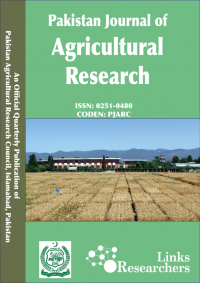MARKETING SYSTEM OF LIVE CAMELS IN THE DESERT ECOLOGIES OF PAKISTAN
Khalid Mahmood Aujla* and Abid Hussain*
ABSTRACT
Livestock markets are trading places for live animals where suppliers and buyers can make transactions. This study was designed to investigate the existing marketing system of live camels in the desert ecologies of Pakistan. Out of 220 camel farmers that were randomly interviewed for the study, during past one year sale of live camels was reported by more than half of the camel farmers. On an average two camels per farm mainly to meet urgent family cash needs. Mean ages of adult males, milking and non-milking females, male and female young stocks at the time of sale were 8.3, 10.8, 12.3, 1.8 and 2.3 years, respectively, with average sale prices of Rs.102523, Rs.84643, Rs.57800, Rs.43215 and Rs.45833, respectively. The camel markets are generally located far away from the villages. High marketing costs and lack of proper market infrastructure/facilities compel farmers to sell camels at village level to the village dealers and fellow farmers at relatively low prices. Percent difference in prices at wholesale market and village levels were 28.6, 12.9, 6.0 and 0.5 for adult male, wet female, dry female and young stock, respectively. The prevailing marketing situation of live camels is an indicative of exploitation farmers from the village dealers/market intermediaries. The regulatory laws of livestock markets applied in Pakistan are not comprehensive and do not cover all the aspects necessary for the markets to function efficiently. It is, therefore, recommended that the proper marketing system and physical infrastructure for live camels should be developed to benefit the poor camel farmers.
To share on other social networks, click on any share button. What are these?






